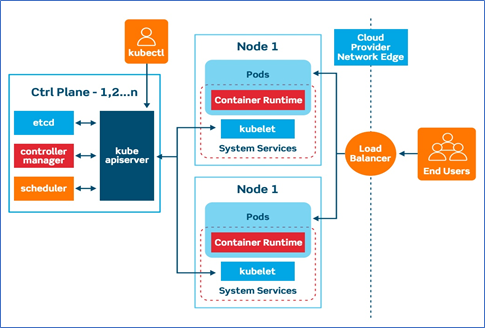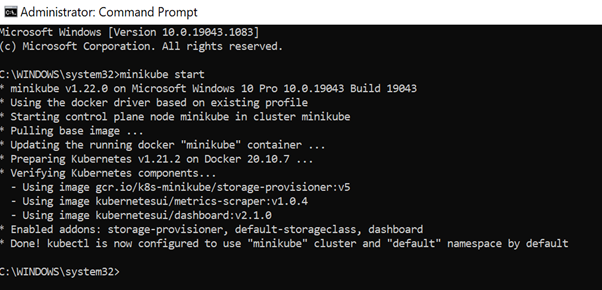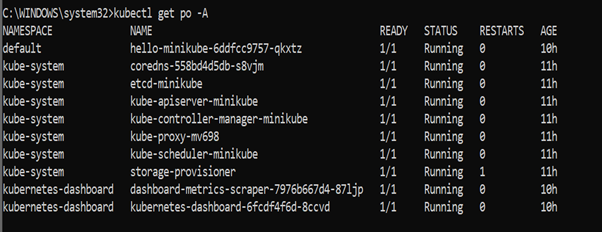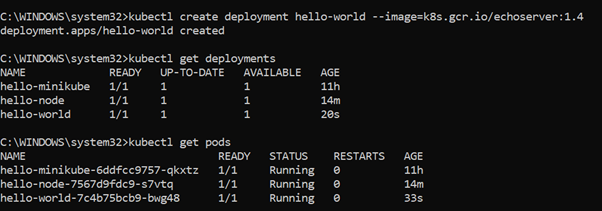This article was published as a part of the Data Science Blogathon
Introduction
Kubernetes is an open-source container orchestration tool that helps in managing containerized applications in different development environments. Kubernetes enables building application services that consist of multiple containers, scheduling these containers across a cluster, scaling the containers, and manage their performance over time.
What problems does Kubernetes solve?
If we consider microservices, which typically each run in their own containers, a containerized application might become hundreds or thousands of containers when building and operating a large-scale system. Significant complexity would be involved to manage these containers manually. Hence, this is where container orchestration can come in handy for making that operational complexity manageable for development and operations. Container orchestration technologies like Kubernetes automatically and continuously monitor the cluster of containers and make adjustments as required ensuring that there is no downtime in a production environment. For instance, if a container goes down, another container automatically takes its place without the end-user ever noticing.
Kubernetes vs Dockers:
Docker refers to a specific platform meant for building containerized applications, while Kubernetes is a container orchestration tool that aids in managing the container’s lifecycle. Docker Swarm is Docker’s own container orchestration tool that enables managing multiple containers deployed across multiple host machines.
Basic Architecture of Kubernetes:
Like other distributed computing platforms, a Kubernetes cluster has at least one master and multiple compute nodes. The master node is the node that works on exposing the application program interface (API), scheduling the deployments, and managing the overall cluster. Each of the worker nodes runs a container runtime, such as Docker, along with an agent that communicates with the master. The nodes can either be virtual machines (VMs) running in a cloud or physical servers running within a data centre.

Kubernetes Master Node:
The master node receives input from a CLI or UI via an API. This input can be the commands that a developer provides to Kubernetes. For example, which container images are to be run, which ports are to be exposed, parameters of the desired state of the applications running in the cluster are defined by the developer.
1) API Server: Both internal & external components communicate through the same API server.
2) Key-Value Store (etcd): The Key-value store acts as the single source of truth for all components present in the Kubernetes cluster. The master node asks the etcd for retrieving parameters of the state of the nodes and containers.
3) Controller: A controller checks the state of the cluster and makes changes attempting to move it from the current state to the desired state.
4) Scheduler: A Scheduler looks for requests coming from the API Server and is responsible for assigning them to healthy nodes. It assesses the quality of the nodes and deploys pods to the best-suited node.
Kubernetes Worker Node: Worker Nodes are responsible for executing the work assignments from the master Node are and reporting back the results to the master node.
1) Kubelet: Every node of the cluster has a ‘Kubelet’ which is the primary Kubernetes agent. Kubelet watches for tasks from the master node, executes them and then reports back the results to the master node. Additionally, it monitors the pods and reports back to the Master if a pod is dysfunctional.
2) Container Runtime: A container runtime executes containers and managers container images on a node. For example, Docker is a popular container runtime.
3) Kube-Proxy: The Kube-proxy maintains network rules on each node and ensures that each node has an IP.
4) Pod: A pod constitutes one or more containers and includes shared storage (volumes), IP address, and information about how to run them.
Running Kubernetes on Local
We can run Kubernetes on our local system, instead of a cloud service. For this, we would need to install two programs – Minikube and Kubectl. Minikube allows us to run a single-node Kubernetes cluster on our local computer. Kubectl is a command-line tool for Kubernetes.
Minikube uses a hypervisor driver that varies by the operating system. This link has the list of drivers that one could use for setting up Minikube- https://minikube.sigs.k8s.io/docs/drivers/
We will be using Docker as the hypervisor drive in this illustration. The hypervisor drive acts as an abstraction layer to separate the virtual machine from the system hardware.

Source: https://www.padok.fr/en/blog/minikube-kubeadm-kind-k3s
Starting the cluster
To start the cluster, we can run the following command from a terminal with administrative access:
minikube start
In case Minikube fails to start, you can choose some other appropriate driver for setting up a compatible container or virtual machine manager.
As seen in the output, Minikube has used the docker driver for our case.

Interacting with the cluster
We can interact with the created Kubernetes cluster using kubectl by running the following command:
kubectl get po -A
This displays all the components of the Kubernetes cluster that have been created like etcd – minikube, Kube-apiserver-minikube, Kube-controller-manager-minikube, Kube-scheduler-minikube, etc. These, as the name indicates, are the components that we had discussed in the previous sections.

Creating a sample deployment
We can use the following command to create a deployment that manages a pod. This pod manages a container based on the Docker image provided.
kubectl create deployment hello-world --image=k8s.gcr.io/echoserver:1.4
We can view the deployment using the command below:
kubectl get deployments
To view the pods, we can run this command:
kubectl get pods

We can expose the deployment on a port:
kubectl expose deployment hello-world --type=NodePort --port=8080
To access the deployment, we can run the following command:
kubectl port-forward service/hello-world 7080:8080
About Author
Nibedita completed her master’s in Chemical Engineering from IIT Kharagpur in 2014 and is currently working as a Senior Consultant at AbsolutData Analytics. In her current capacity, she works on building AI/ML-based solutions for clients from an array of industries.






